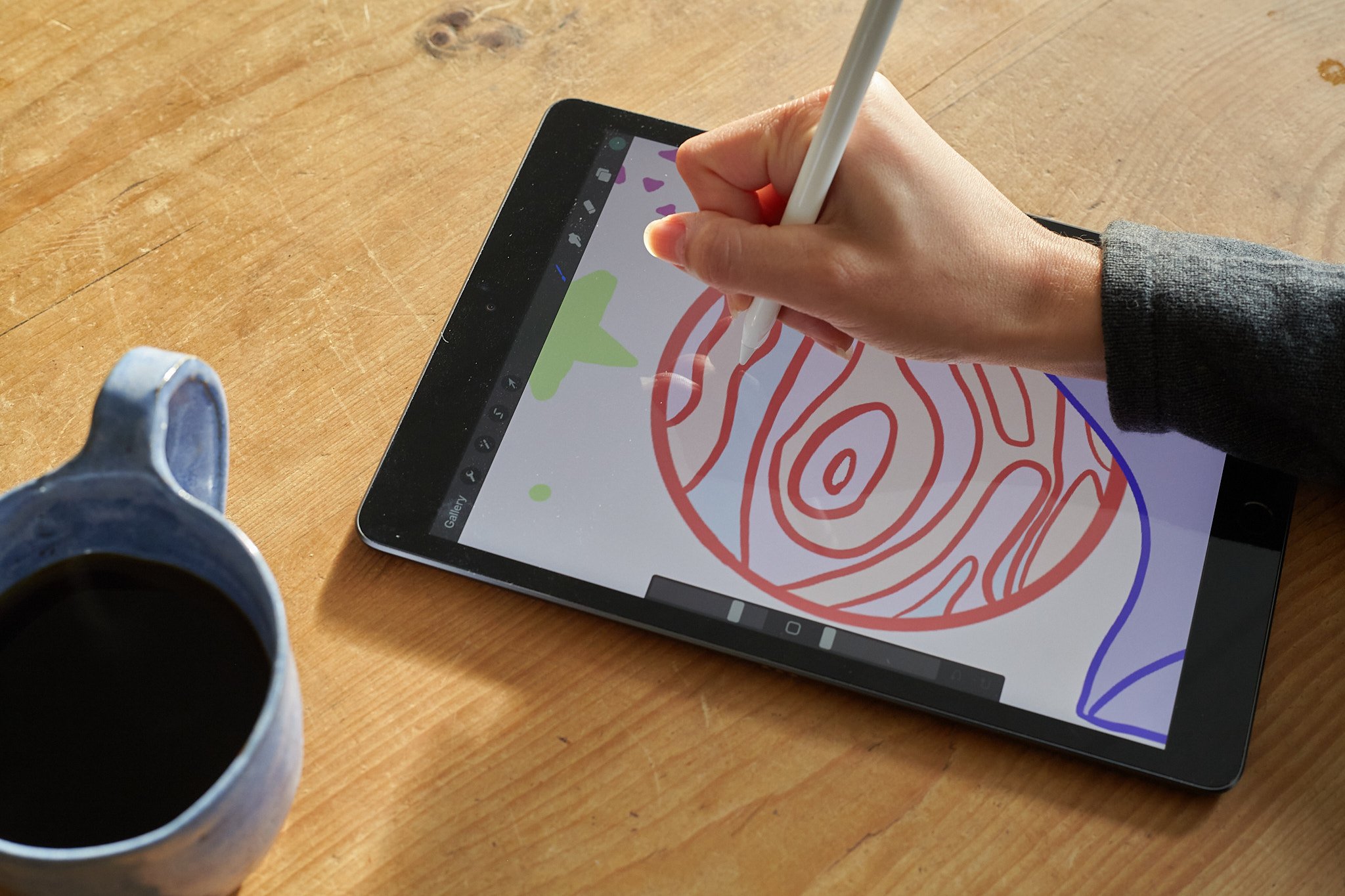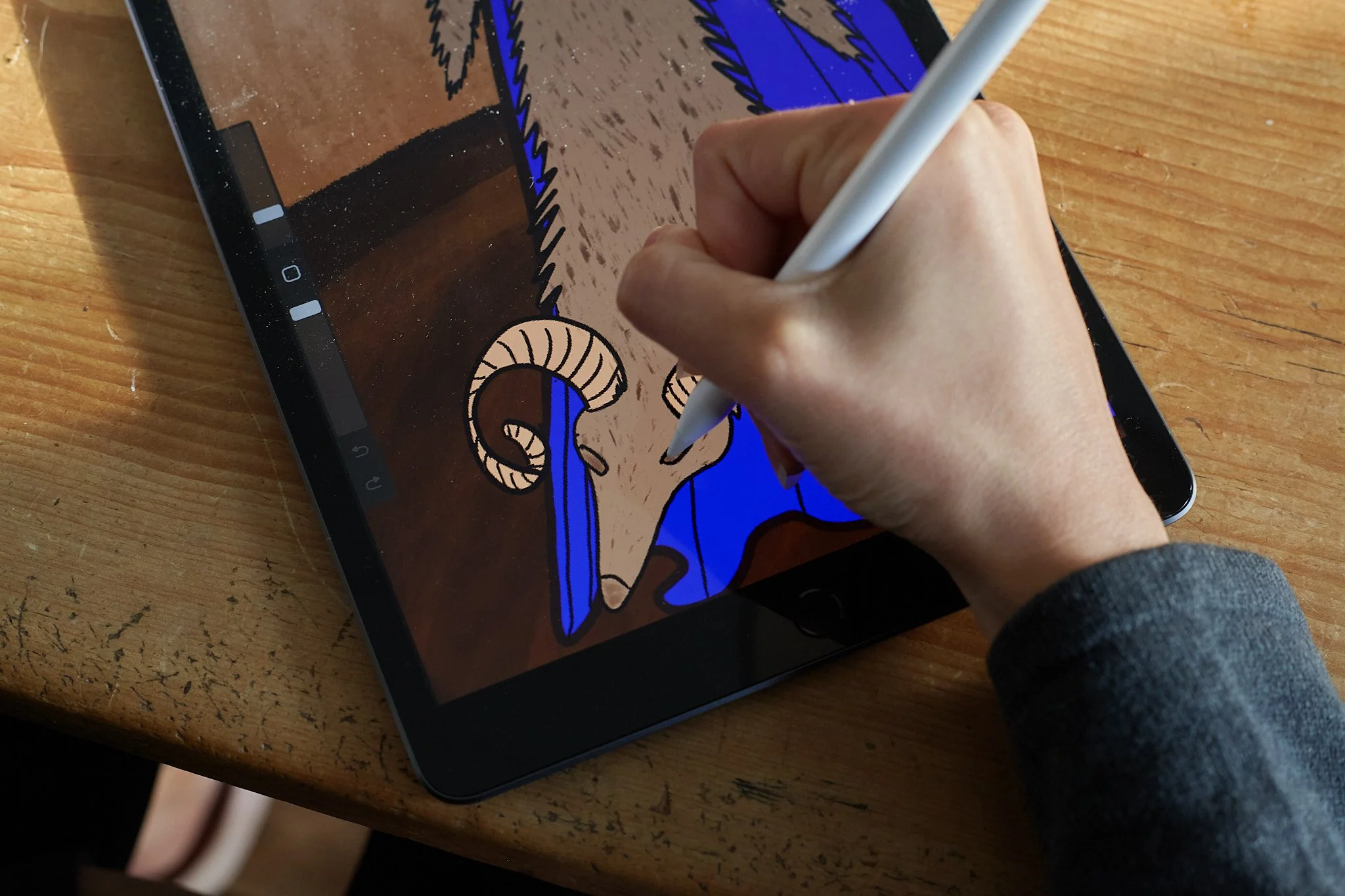Digital Art, Explained: A Friendly Guide for Anyone Curious About Making Art in the Digital Age
By Cansu Waldron
I recently put together a presentation for a talk about digital art at my local library, introducing our community to the wonders of digital art and realized… we don’t actually have a simple, comprehensive article like this on Digital Arts Blog. So here it is — a written version of that talk, with hopefully enough clarity and links to direct you to in-depth articles to make the whole world of digital art feel less mysterious.
Whether you’re a traditional artist, a curious beginner, a designer dipping into new tools, or someone who still isn’t sure what “digital art” even means — this is for you.
So… What Is Digital Art?
Digital art is any artistic practice where digital technology plays a role in how the artwork is created or experienced.
Sometimes the whole thing is made on a screen.
Sometimes it starts analog and becomes digital later.
Sometimes the viewing experience is the artwork — like AR pieces you activate with your phone.
A (Very) Quick History of Digital Art
People tend to think digital art began with the iPad, but the story actually goes back to the 1960s — long before anyone had Photoshop or Procreate.
Artists like Vera Molnar, Frieder Nake, and Manfred Mohr started experimenting with early computers, creating algorithmic drawings with machines that filled entire rooms. In the 80s and 90s, as personal computers became more affordable, artists pushed into multimedia installations, early VR, and, once the internet arrived, net art and web-based experiments.
The 2000s brought creative coding tools like Processing, which made generative work accessible to non-engineers. And the 2010s and 2020s gave us AR, VR, powerful 3D engines, and of course, AI systems that shifted both the creative process and public conversation around what art “should” be.
Every decade brings a new tool, and artists figure out how to use it in ways no one expected. That’s why I love working in this field!
The Many Types of Digital Art
There’s a lot of ways to create digital art, and many of them are intertwined. Below is a breakdown of the main “families” you’ll run into, with quick descriptions to help you get oriented.
1) Digital extensions of traditional art: These practices evolve from classic mediums but use digital tools.
Created using software like Procreate or Photoshop. Think of it as painting, but your studio lives inside a tablet.
Often stylized, graphic, or narrative-driven. Used in publishing, branding, posters, and independent art projects.
Combining, altering, or reimagining photographs to create something surreal or entirely new.
Low-res, grid-based artwork often associated with retro games. It’s intentionally limited — part of the charm.
• 3D art
Think virtual sculptures or environments. Creating digital objects, characters, or scenes using software like Blender or Cinema4D.
Cut and paste meets digital freedom thanks to editing, filtering, and multiplication.
Avatars need to dress up, too!
Can be 2D or 3D, moving imagery.
2) Computer-generated art
The artist creates an algorithm with rules, code, and randomness, and the artwork emerges from it.
Art created through or with AI systems. Controversial, sometimes misunderstood, and like any medium: capable of brilliance or mediocrity depending on the artist’s intention.
Aesthetics built from digital errors, broken files, corrupted imagery — celebrating the “wrongness” of technology.
3) Interactive + immersive art
• VR (Virtual Reality)
Fully immersive spaces viewed through a headset — from dreamlike environments to interactive installations.
Digital layers placed onto physical spaces. Think QR codes that activate animations or sculptures you view through your phone.
• Virtual Worlds / Game Engines
Also known as game design or world-building. Artworks built using Unity, Unreal Engine, and similar platforms — sometimes interactive, sometimes cinematic.
• Internet-based art
Works built specifically for online environments. Sometimes interactive, sometimes conceptual, sometimes intentionally strange.
Okay… But How Do I Start?
If you’re new to digital art, here’s my honest advice: Start with what already feels familiar.
If you draw → try digital illustration.
If you take photos → try digital manipulation.
If you like building things → try 3D.
If you’re curious about code → try generative tools.
Why Digital Art Matters Today
Digital tools are part of almost every creative industry now — from illustration and animation to fashion, advertising, publishing, and installation art. Even if you primarily work traditionally, digital literacy can expand your creative possibilities, help you collaborate with brands, or simply give you new ways to express ideas.
















